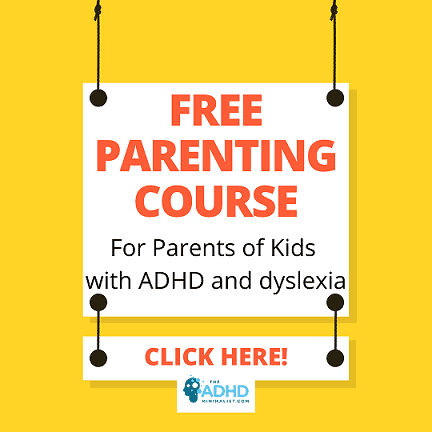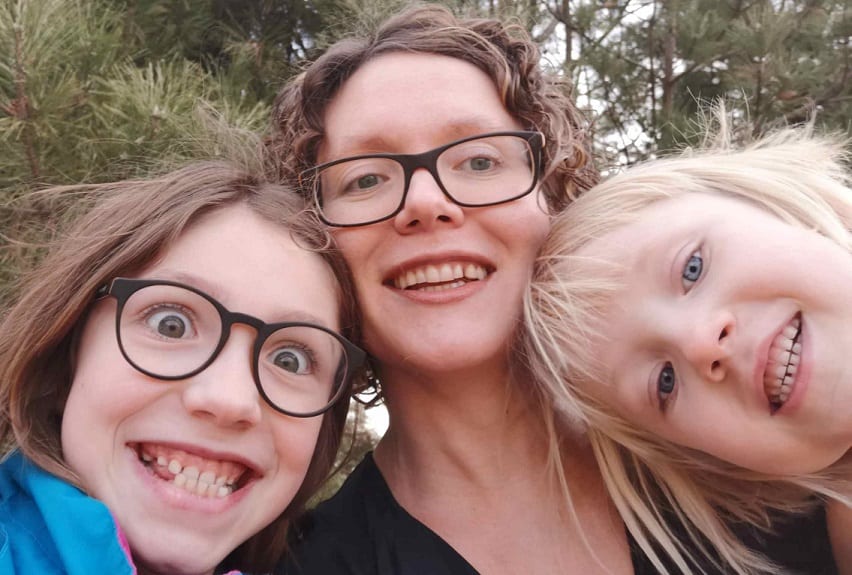
I am the mother of three kids two of which have been diagnosed with ADHD and Dyslexia.
My middle child, Maria (10), was diagnosed with ADHD predominantly inattentive several years ago. She is an extreme pack rat and has trouble throwing anything away!
At one point her room got so bad I noticed she didn’t want to be in it! That was when I decided I needed a strategy for dealing with her attachment to things!
The ideas in this post will work for any child who has a hard time parting with his/her things.
Many children who have a hard time letting go of their possessions have a diagnosis, but a diagnosis is not necessary to help your Pack Rat declutter!

Wondering what to do when your child saves everything?
Children who are extreme pack rats are most likely anxious and can turn into adult hoarders! These kids need adults to gently intervene and help them with their anxiety and their mountain of things. Start by having a dialog with your child about the state of their room which is probably a mess.
Explain that you want to take 70% of their stuff to the storage room! Make a compromise with them on how much goes. Shoot for 50%. Removing items without discarding gives children a chance to easily experience a clean decluttered room. If they miss something they can have it back. Most kids love the change and miss only a handful of items!
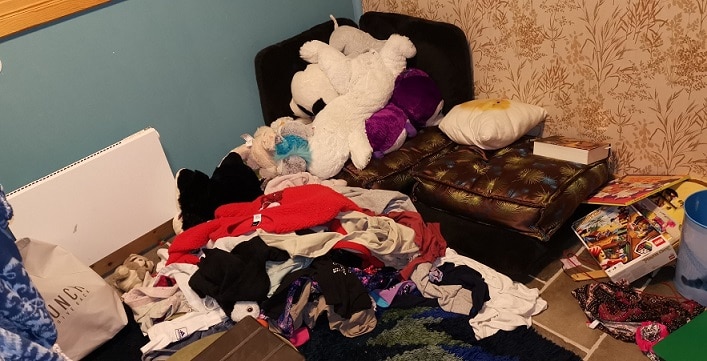
How to talk to your kids about decluttering their rooms
Explaining to your child why you want to make a change usually disables some of their resistance.
In the list under the next heading there are multiple reasons why kids should not live in a room which resembles a garbage dump!
Read this list with your child and talk about which points stand out to him/her.
Many kids will understand the necessity of decluttering their room and why it’s unhealthy to live in a mess. This helps motivate them to tackle their own problem.

If Your Child Doesn’t Want to Declutter
If it’s really hard to sell your child on decluttering don’t forget that you are the parent!
There is power in statements like
- ‘’I love you too much to let you live in an unhealthy space’’
- ‘’I love you so much, and I am sad that I haven’t taught you how to take care of your room properly’’
- ‘’I love you so much, and it worries me that you are anxious. If you’re feeling anxious we need to find another way to deal with it that doesn’t involve keeping everything.’’
- ‘’I want you to be able to enjoy your room with friends, so we are going to pack up 60% of your stuff and take it to the storage room. I want you to experience what it’s like to have a clean decluttered room!’’
Hopefully this approach will get your child on board for your decluttering clean up!

If Your Child Continues to Resist Decluttering
If they won’t get on board with decluttering not you can try a tactic that I used with my daughter.
She lived in a huge mess. Even when I cleaned it up with her it was only clean for two day!
I finally warned her that if she didn’t clean up her room in the next week, I was going to declutter and clean her room and she wouldn’t get everything I decluttered back!
She still did not clean her room. I took trash bags and went to work when she was not home!
I tried my best not to get rid of anything important to her. Things I was not sure about, I kept for 3 months in the storage room just in case she asked for them. She didn’t know I kept them and she only wanted 5 things back.
She actually thanked me for cleaning and decluttering her room.
She is a pack rat and if you ask her she often doesn’t want to get rid of anything if you ask her, but she still thought it was relaxing to have a clean, decluttered space!
She was relieved not to have to make all the decisions about what to get rid of by herself!
Use the lists below to discuss with your child why it can be good to get rid of extra stuff and clean up their room.
You can look at the list of all the negative side effects that come with a messy room. Ask your child what they think.
Read the list of positives that come from a clean organized room with your child. Ask him/her which ones they get most excited about.
When your child understands why they need to clean up their room you can move on to the list of ideas for helping your child get rid of toys.
I suggest that parents read the list under the heading ‘’Strategies for helping kids get rid of toys’’ by themselves first.
If there are things on the list that you can’t help your children with because this idea/concept will not work for your family then you should only read the options that are actually feasible for your child.
If you’re not a creative person and some of the creative ideas seem like gigantic tasks try asking grandma or a friend to come over and be creative with your child.
Good luck!
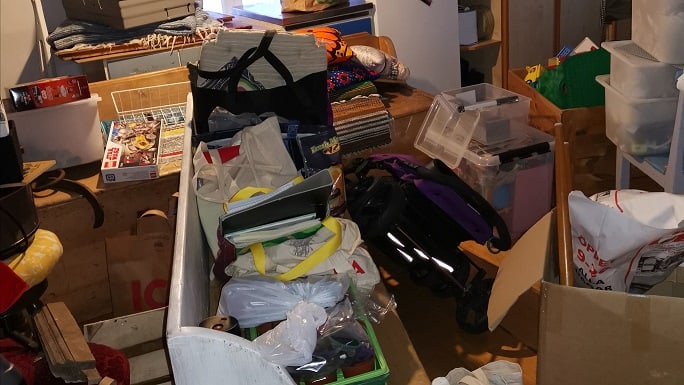
Why an overbelamerad room needs to be decluttered
- According to a study on PubMed.gov when you live in a cluttered disorganized space you’re likely to have high cortisol levels which are associated with poor health!
- PubMed.gov also noted that those who lived in messy homes were more likely to be depressed!
- Princeton University found that visual clutter in your immediate environment can cause your Visual Cortex to be overwhelmed. When this happens you will have trouble concentrating and completing tasks!
- A study from Indiana University found that people who lived in clean houses were more physically active and generally healthier than people who lived in messy houses!
(The links to all my sources are at the bottom of the post.)
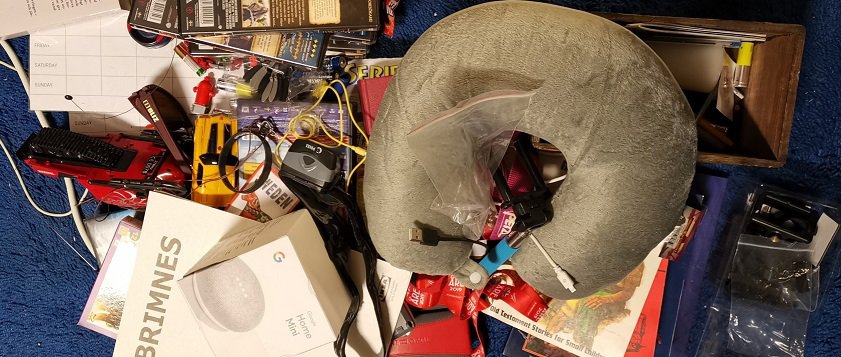
- Clutter has been shown to cause extra stress.
- Living in a mess can make you anxious.
- When you live in a cluttered disorganized space you often forget where you put things.
- Those who live in messy homes spend more time looking for things than those who live in clean homes.
- When you live in a cluttered space you clean less because it takes more time to clean.
Having to move items in order to clean under them is not only a pain, but the extra items can hide dirt, junk, and mold that you don’t see or clean for months!
- Less cleaning = more opportunities for mold and other bacteria to grow in your living environment!
I watched a tv show from England where two ladies helped extremely messy people clean their homes, and one family had a child sleeping next to salmonella growing on her window!
- My son (Lage) found that having a very clean and minimalistic bedroom helps reduce his ADHD symptoms, so living in a mess makes ADHD worse!
- Lage (13) says that living in a messy room makes you feel claustrophobic.
- Lots of stuff doesn’t = Lots of happiness. In fact most people are happier in a decluttered home that’s clean!
- Lage claims that since he cleaned up his room, he doesn’t stubb his toes as often as when it was a mess!
- You don’t invite friends over as often when you have a messy room.
- According to the Child Mind Institute hoarding is an anxiety disorder. Often when younger children start hoarding it’s linked to OCD, ADHD or other anxiety disorders.
Tweens and older can develop the anxiety disorder of Hoarding on it’s own. Often these tweens grew up in extremely messy homes or had parents that would qualify as hoarders. (You will find a link to the Child Mind Institute at the end of the post)
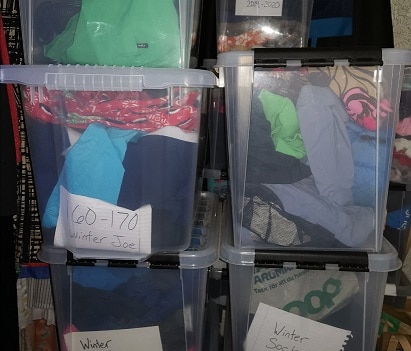
What is hoarding?
Hoarding is an anxiety disorder. Hoarders often save things that other people consider trash.
A man in Sweden saved all the packaging from practically everything he ever bought along with other everyday items and things he found in nature! His house was stuffed!
The people who came to clean up after he died were shocked by the extent of his collections and they turned his home into a museum!
For Hoarders things can become more important than the people in their lives. Often their houses are so full of stuff that they only have paths which are clear of clutter. These paths lead to the most important spaces like the kitchen and bathroom.
Some hoarders are rather organized and have things stacked in plastic boxes.
These people may have things that are valuable, but they probably keep stuff past the expiration date or store things incorrectly because they can’t see or find all their things.
Often when they get help to clean up, most of the things they saved have gone bad, been eaten by bugs/mice, or molded!
Other hoarders just make random piles everywhere and don’t even try to organize their posessions!
Often the state of hoarders homes and their inability to clean up the mess and stop collecting things leads to divorce. Hoarders are often alienated from friends and family because they are embarrassed to invite people over.
Another reason for their alienation can be that friends and family do not want to hang out in an unsanitary environment, and piles of stuff can cause a real hazard for small children when visiting.
- It’s easy to be distracted when you try to do homework or study for a test in a messy room.
In fact I remember that when I was in school I often let my messy room distract me the day before a test!
This was not a conscious choice. The desire to study in a clean organized room surfaced, and I started cleaning instead of studying!
The mess in my room was often so enormous that trying to study after I picked up was completely pointless! I never finished cleaning before my tests, and often I hadn’t studied nearly enough!

A funny story, side note!
My kids are bilingual because my husband is Swedish. My children and I are both Swedish and American.
When my daughter was 5 years old she fell on her bum walking down the stairs. She started yelling ‘’Mommy I stubbed my butt! Mommy come quick I stubbed my Butt!’’
Apparently I hadn’t explained to her that stubbed is a word which is (almost) solely used to describe hurting your toes!
Now that she’s older, she thinks this story is hilarious and tells people that since decluttering her room she stubbs her butt less!

The Benefits of reducing the items in your room!
- It can make you money! One of Lange’s favorite things about minimizing the stuff in his bedroom was that it made him money when he sold Lego sets and gently used electronics on ebay!
- You save money! Lage found that when he decided to only have things that he really liked in his room, he quit buying junky toys. This saved him lots of money that he is saving to buy the newest playstation when it comes out in november!
- It’s easier to redecorate and move furniture around when you have a clean room.
- You don’t use most of your things. Lage believes that most of us live for years while only touching and using 10% of our stuff! He was hardly using any of the stuff he had in his old room. It was just getting in his way.
- Less stuff = Easier to put things away!
- Mom (or older kids or Dad) does less laundry! ‘’When you have a clean room you won’t mix your dirty clothes together with your clean clothes! When you can’t put clean clothes away easily because you have piles of stuff in front of your dresser It’s easy to leave them on the floor! This just creates a bigger mess and makes more work’’ -Lage
- You can own fewer more expensive things! ‘’Owning less clothes means that I can spend more money on fewer name brand items. I have few clothes, so I don’t even bother folding them! They don’t get wrinkly floating around in my two big drawers!’’ -Lage
- You don’t ever have to worry about mold or bacteria growing in your room!
- ‘’I feel my ADHD symptoms less in my clean decluttered room!’’ – Lage
- ‘’I can concentrate better when my room is clean and decluttered. Homework is easier. ‘’ – Lage
- ‘’It’s easier to decide what to wear in the morning when you don’t have a mountain of cloths half of which you don’t even like!’’ – Lage
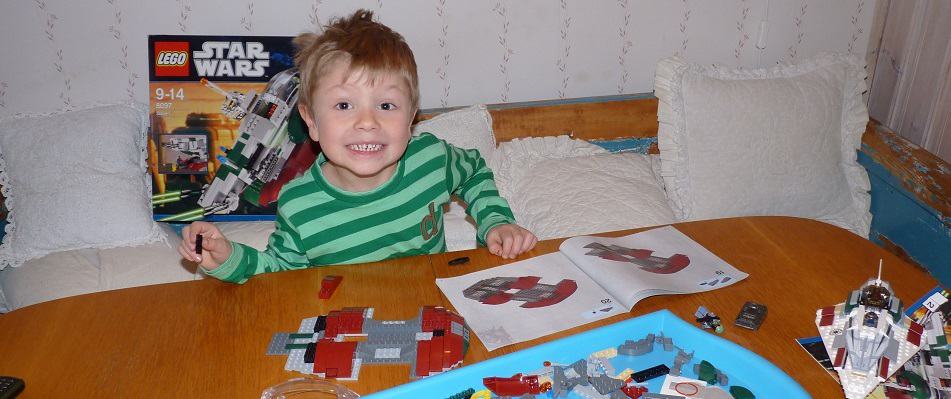
Involve your child as much as possible as you declutter their room.
If your child is older than five years old you can let him/her be more involved in the process. Teenagers should do most of the deciding (what to keep and what gets boxed up) themselves.
You can compromise with your teenager about how much they get to keep in their room, but when you strike a bargain take some before pictures and make sure that the right amount of stuff gets boxed up.
If you have a special needs child they may need to have a decluttered room for their safety and wellbeing, but may not be able to help much.
Make sure that you know what their favorite things are before you start, so you don’t remove them. Make sure you ask them beforehand. You may be surprised how often favorite things change!

Strategies for helping kids let go of toys!
- Buy toys from your kids when they are in really bad shape or buy things that you really want them to get rid of!
DO THIS BEFORE you buy toys that can be regifted. It’s always better to buy the cheap toys first and then move on the more expensive toys.
When you can’t regift a toy, don’t offer to pay much for it. The point is that giving them a little money for the toys will make it easier for your children to get rid of old toys and if it makes you happy because you don’t have to look at junky toys anymore then it’s a win-win!
Think of a time when you were decluttering and you stood holding a shirt or an item and couldn’t decide if you should keep it or toss it. If someone would have offered 5$ for your used shirt it probably would have made it a whole lot easier for you to let it go!

- Buy toys from your kids if they are in good shape and you can regift them. I am a firm believer that gifts don’t need to be new. Last Christmas my brother’s family and my family decided to give each other used and homemade gifts.
Several times I paid one of my older kids for toys that they had grown out of. I knew that one of my younger children really liked these toys and my older children always had a hard time giving their things to younger siblings (With the exception of clothes).
When I offered to buy the toys for a siblings birthday suddenly they were happy to get rid of the toys!
When you can regift a toy let that be reflected in the price. Pay your kids what you would pay at Goodwill or Facebook marketplace. Buy toys that are in good shape AFTER you buy the junky toys. That way your child will not haggle over the price as much.
- Help your child have a garage sale. This requires a bit more work, but it can be well worth it! Make sure your child knows that none of the things going to the garage sale are coming back!
You can either help your child sell the things at home and make sure he knows you will donate the rest to Goodwill, or you can make a deal with a friend.
The idea is that your friend can keep a percentage if they sell the toys at their garage sale. Ask your friend to drive the leftover stuff to Goodwill so you son/daughter doesn’t have to see what didn’t sell.
Most likely your child will be happy for the money and not worry about what sold or didn’t sell. (Make sure you don’t visit the Goodwill where the kid’s toys are going for a few months!)

- Ask your child to donate some toys to kids who have nothing. Most kids can find a few toys to give away if they know that it’s for a good cause.
If you declutter close to christmas there are many donation centers who will take gently used toys for kids who won’t otherwise get any christmas gifts.
- Ask your child to give up unhealthy toys! Cheap toys from Low priced chain stores which sell cheap items from China probably have lead in the paint. Lead can aggravate ADHD and some think it could even cause ADHD!
Check out my article about Lead if you want to know more about the ADHD lead link. The Kiss of Death! Lead Lipstick can cause ADHD in children!
Another example of unhealthy toys are toys that are made of material and cannot be washed. (stuffed animals, poor quality dress up clothes, ect)
- Have your child think up what their ideal room looks like, maybe clip out magazine articles and make a mood board. Probably NO kids will make a mood board with pictures of a messy room or a hoard of things stacked to the ceiling so you can’t see the floor!
If your child wants a particular wall color or a reasonable room makeover maybe you can make this a reward for cleaning up and getting rid of things!
- Make a time capsule! If your child is eight pick eight favorite toys. One favorite toy from each year. This is a good way to get toys out of your child’s room if they save toys that they have grown out of.
Have your child write something about what year each toy was his/her favorite and why. Then you can put it in a metal box, bury it and make a map! Decide with your child if they will dig up after 10, 15 or 20 years!
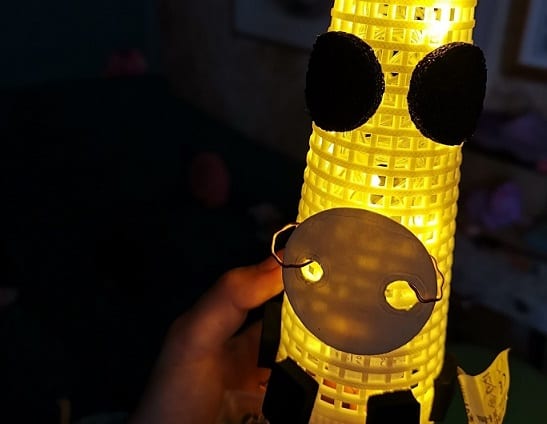
- Make lamps out of your child’s old toys! My daughter made a lamp out of a spool from my overlock machine!
You can make your lamps more fun by gluing toys to the base of an old lamp. You can even glue toys to the lamp legs if you like! If you want to, you can spray paint the lamp and toys all one color!
If you use light bulbs that don’t get hot you can make a lamp out of practically anything! Try hanging toys from strings around your light fixture or taking the stuffing out of stuffed animals and making a cloud lamp! The possibilities are endless!
Try making some lamps for Christmas gifts. Second-hand stores often have ugly lamps for cheap that could use a lite creativity to make them nice again!
- Make art or christmas ornaments out of old toys and saved papers. You could make a picture using toys to spell your child’s name. Gluing small beads or toys around a picture can be a fun christmas ornament for grandma or grandpa.
- Sew pillows or a quilts out of old clothes, baby blankets, baby sheets, and stuffed animals. I cut some of my childhood stuffed animals up when they lost their shape and made pillow quilts out of them, by sewing squares together.
- Make a scrapbook! If your child keeps everything including papers from school, cards, and glittery clothing tags get them a binder with page protectors to put everything in.
I started binders for my kids when they were small and my oldest two now have four each.
I put in art they made in grade school, a few papers from school that they did good on, pictures of them and their class, cards from grandma and grandpa, Short stories that they wrote for creative writing, and other things they thought were important enough to put in the binder.
My daughters get their binders out and look through them once or twice a month.
I did throw away approximately ¾ of the stuff my kids came home from school with. I did not show them what I threw away!
When my daughter, Maria, (who saves everything) comes home with papers from school I let her have it in her room for about a week. Then I take the papers and tell her I am going to go through them and put them in her binder.
I ask her which ones are her favorites and make sure that I include them in the binder. If things are too big I cut them to fit.
I do not spend a lot of time on this. I just put the stuff in the plastic page protectors and cut only the things that are too big!
She thanks me for making her binders and she doesn’t seem to care that I don’t put everything in them.
- Make a reward chart. Your reward charts could be as simple as putting 15-20 stickers on a paper and getting to do something fun with mom or dad.
The 15 stickers represent 15 things that the child got rid of and what activity they get depends on what your child thinks is fun.
- Swimming
- Going to the Zoo
- Buying whatever baking ingredients they want and baking something special
- Going to a museum
- Taking a mini camping trip on the weekend
- Getting to paint his/her room
- Learning to sew pillows out of their baby blankets with grandma
- Going skiing (depending where you live)
- Getting to take a surfing class
- Learning to drive a dirt bike
- Going to see a movie
- Going out to eat
- Your list will depend on where you live, what you have access to and what your budget is.

- Make paper maché pinatas out of old papers. If your child saves tons of papers you can make several paper maché pinatas which they can fill with candy and hit at their birthday party!
It’s super easy!
- Mix flour and water to make a paste.
- Blow up a balloon.
- Paste the papers on the balloon until you have at least 5 layers.
- Let dry.
- Paint
- Use a glue gun to glue on more decorations and add things like hats.
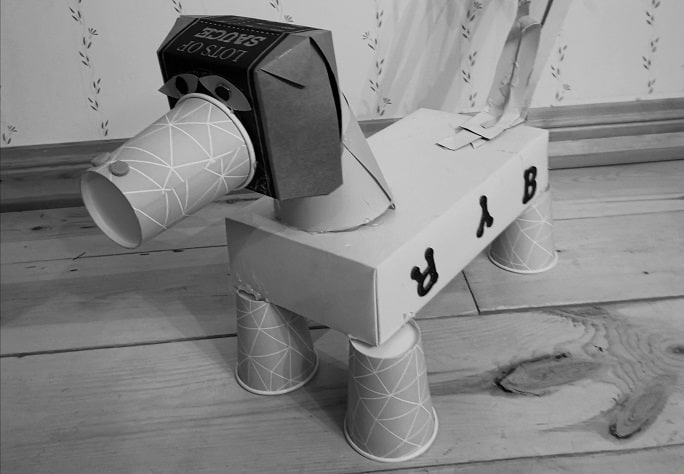
- Make a pinata out of old boxes!
All you need is a glue gun and boxes and som papers to decorate it with!
Make sure your child knows that the pinata will be used!
Decluttering with your child
Discuss the ideas on my lists then get out a pen and paper, make some signs, and put them on boxes.
Make signs for:
- Things to give away
- Items to do crafts with
- Toys to sell
- Clothes to sell
- Papers and pictures for a scrapbook
- Items for a time capsule
- Items for paper/box pinatas
- Items for sewing projects
- Unhealthy toys
- Toys that mom wants to buy
- Any other sign you find helpful
Disscuss with your child where items go and put them in the boxes.
When you are done with this step take these boxes out of the room and make sure that you actually do the craft projects and get rid of the donate items!
You may want to keep the boxes available in case you find more items during the next stage of decluttering. Just get them out of your child’s room for now.
Most likely there will still be too much stuff in your child’s room at this point. Thats ok. You will now move on to the box method of deciding what to keep

Try my Box Method for Deciding What to Keep
- Group like items together in your child’s bedroom. Put all the clothes and shoes in one big pile, all the electronics together, all the art supplies together, and all the toys together. You get the idea.
- Get boxes that you feel give sufficient space for each category. The clothing and shoe box will probably be the biggest. The electronics box, probably the smallest.
- You (The Parent) decide the size of the box.
- Write the name of the category on the box for example Electronics.
- The box is a boundary. Your child may not have more items for a particular category than fit in the box.
- Let your child go through the piles and decide what to keep. They can either try Marie Kondo’s idea of keeping things that spark joy or they can keep things they know they like or use often. When the box is full everything outside the box goes to the storae room, thrift store, or a yard sale!
The boxes do not have to be completely full. If your child is content with the items he has picked and the box is half full that’s great!
Try to get through their rooms quickly. Don’t let it drag on longer than three days.
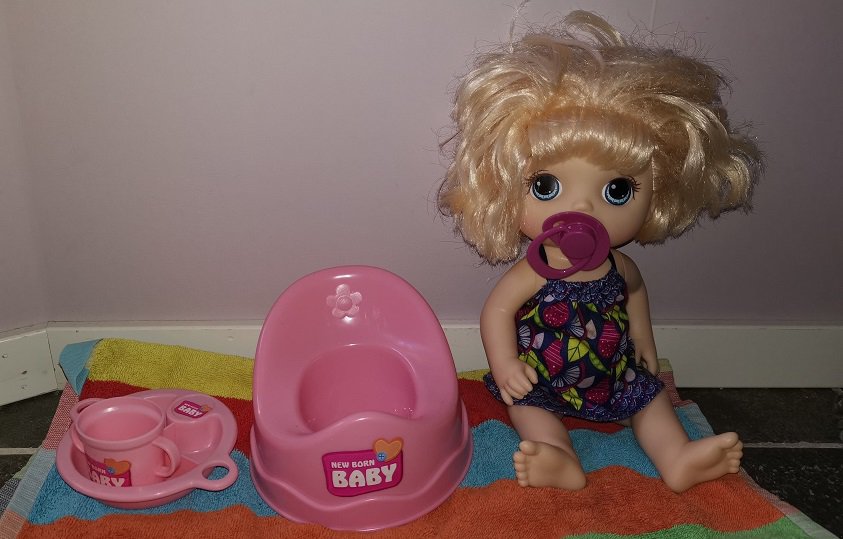
After the initial clean up, pick a home for each of your child’s things.
Involve your child in deciding where things will be stored.
Usually kids have really good ideas.
Your child will know best where and how he/she uses his things.
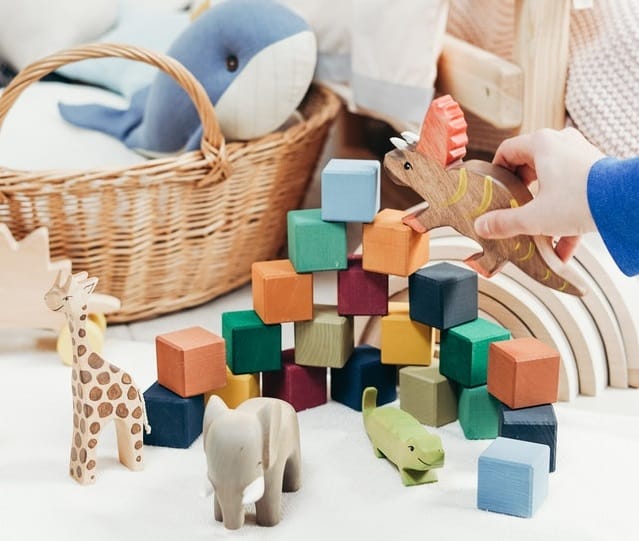
Teach your child how to clean his decluttered room
You must first show your child what you mean when you ask him to clean his room.
After you declutter I would suggest cleaning your childs room when he/she is not home.
When you think you are done decluttering send your child out with your spouse or to grandma’s while you clean.
You will be suprised how many items come out of the woodwork when you start moving furniture, making beds and vaccuming! If you find more junk at this point just get rid of it!
This will give your child a wonderful room to come home to. Hopefully they will enjoy their new clean, decluttered room and won’t want to go back to the mess they had before!
The next time your child needs to pick up his/her room and clean it’s time for a lesson in cleaning and tidying!
You can’t expect your children to clean their rooms, to your standards, if they have never been taught. -Annie
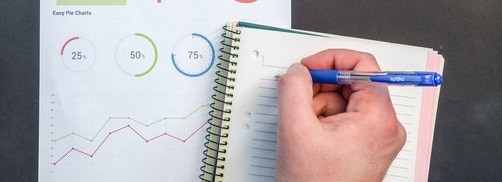
Make a cleaning cart.
If they can read write it out, but if not use pictures to show the order of the cleaning process.
I find that I need to be available to my daughter while she is cleaning. I ask her to do one thing at a time and report back to me when she is done. Then I give her the next task.
Breaking the down chore of cleaning her room into many small tasks takes the stress out of the job. When I give her one small job at a time she is able to clean up her entire room with only a little guidance from me.
She doesn’t cry and make a big fuss when I use this approach because she knows that she can do all the tasks on the list. I use the picture chart to remind her what to do next.
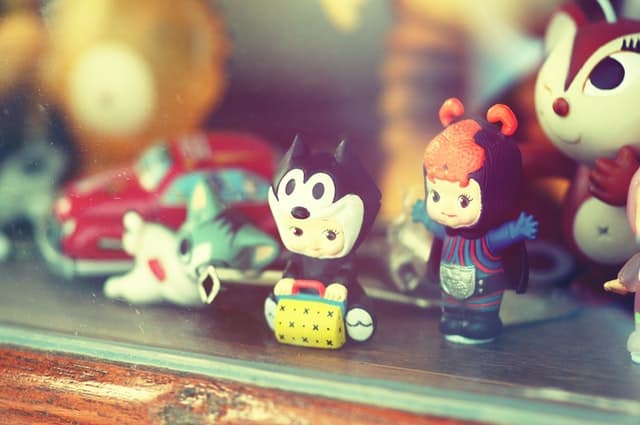
The following things should be on your chart
- Take all the dirty laundry to the laundry room. I always have her start with this task. This quickly gets a big mess off the floor and out of the room.
- Throw away all the trash you can see.
- Put all books back on the shelf.
- Throw away all the papers from old homework assignments.
- Fold and put away all the clean clothes you find in the bedroom. My daughter often leaves clean clothes lying about in her room. She takes out two shirts in the morning, picks one and doesn’t put the extra one back. After a week, there is usually a pile of clean clothes that need to be refolded.
- Put all the loose legos in the lego box.
- Lego sets that your child wants to keep together go on a shelf or in a cupboard. Often children get these down when they are playing and don’t put them back up again.
- Put all the craft stuff away. I am seriously thinking about taking all the craft supplies out of my daughters room and making a craft station in a different part of the house.
Craft supplies are hard to sort and usually doing crafts, produces huge amounts of trash.
Whether you have craft supplies in the room or not, if your child likes to do crafts he or she will have lots of finished or even half finished craft projects in their room. These need to be gone through every time you clean.
A rule for how long craft projects are kept can be helpful. Giving your child a plastic box to keep their crafts in kan be another way to solve this problem.
When the box is full they have to pick something to get rid of if they want to keep new projects.
- Sort all other toys into their bins or boxes. In order to make this easier you should not have too many different toy categories in your child’s room.
Consider rotating toys between your children’s rooms and the storage room or making a playroom where you rotate toys.
Having fewer categories to sort will make the cleaning process much smoother for your child.
They won’t look at the toy piles on their floor and get overwhelmed if they only have a few categories to sort.
For example, if all the toys are either Lego’s, Barbies, or pet shops, and they all have a permanent home your child will know what category the toys belong to and where to put them without your help.
- Check whatever is left on the floor. If your child finds things they do not know what to do with, have them bring these things to you.
You can then instruct them where to put each item. If there are old batteries put them in the recycling. If there are toys from your little sisters room put them back.
If your child has ADD and really struggles with this task it may be necessary for you to do it for him/her. If I notice my daughter is tired or overwhelmed I let her leave these items with me and I sort them myself.
- Most likely you will find more trash at this point. Throw it away.
- You could have your child dust if you like. I usually help with a thural cleaning once a month.
I go in after my daughter has cleaned and I do most of the dusting, along with shaking out rugs, and washing the windows and the mirror. You can have your child dust every week as part of their routine if this works for you.
- Vacuum the floor or have your child do it, and your done.
After helping my daughter clean her room this way for some weeks she started to clean the living room every once in a while.

she began to spontaneously pick up her room once or twice a week.
Giving her the tools to clean her room gave her confidence to sort and put things away all by herself.
Her room is still extremely messy at times. Usually this happens when we have been very busy, but she knows that when she gets started it doesn’t take long before her room is clean again.
Watch the video of My daughter’s room after we decluttered and redecorated!
After we reorganized her room we redecorated. If you need some inspiration for fixing your child’s room read my other blog posts. Click below.
A Monochrome bedroom decreased my daughters stress and ADHD
How to create a minimalistic, monochrome bedroom with easy to use storage (A Helpful illustrated guide)
DIY Bedroom Storage, Lace On Cabinets, an illustrated guide.
Why kids with ADHD need their own bedrooms
For more information and reading tips check out Our Favourite Resources page!
https://theadhdminimalist.com/our-favourite-resources/
(Source) https://pubmed.ncbi.nlm.nih.gov/19934011/
(Source) https://pubmed.ncbi.nlm.nih.gov/21228167/
(Source) https://newsinfo.iu.edu/web/page/normal/14627.html
Copyright Annie Eklöv


